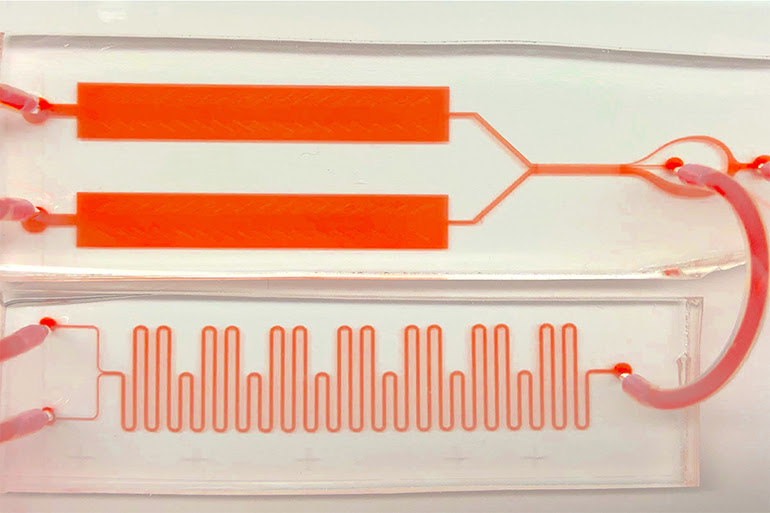JANUARY 5TH, 2021

Though blood tests are a routine part of clinical care and hospital labs are able to quantify a myriad biomarkers, the results only indicate measurements at certain points in time. Continuous monitoring is available for only a few analytes such as glucose and oxygen. Now researchers at Stanford University have created a device that can constantly track concentrations of just about any protein, antibody, or hormone found in blood.
The technology is doing to the ubiquitous ELISA tests (Enzyme-linked Immunosorbent Assay) what video did to still photography. It provides a continuous stream of snapshots of readings that can be used to view trends of analyte concentrations in near real-time.
Dubbed as “Real-time ELISA,” the prototype microfluidic device was initially designed to measure insulin and glucose levels, though many other biomolecules can be used as targets. Tested in lab rats, the device employs a needle that sources blood from a vessel and moves it through its microfluidic channels. This happens repeatedly while ELISA is continously performed on the blood.
The trick to actually being able to run an ELISA test over and over depends on a “protein sandwich” that consists of two antibodies stuck together. One seeks out and attaches to the protein being searched, while the other, a fluorescent marker, is made to activate when the connection is made. Using a high speed camera, the now glowing marker can be detected and its brightness can be used to quantify the amount of target analyte in the sample.
The Stanford team believes that the technology can help to closely monitor patients during events such as cytokine storms, as well as for biomedical research in order to quickly see what effect different therapies have on blood chemistry.
The team is already working on another version of the device that can measure IL-6, an important cytokine involved in the progression of sepsis. Currently IL-6 tests take up to three days to complete, but sepsis doesn’t wait on the results as it develops.
“In sepsis, time is key – every hour that goes by, your probability of dying increases by 8 percent,” said Tom Soh, the research team lead. “Patients don’t have three days for a single test. That could have life-saving implications.”
Study in Nature Biomedical Engineering: A fluorescence sandwich immunoassay for the real-time continuous detection of glucose and insulin in live animals
Via: Stanford


Leave a Reply